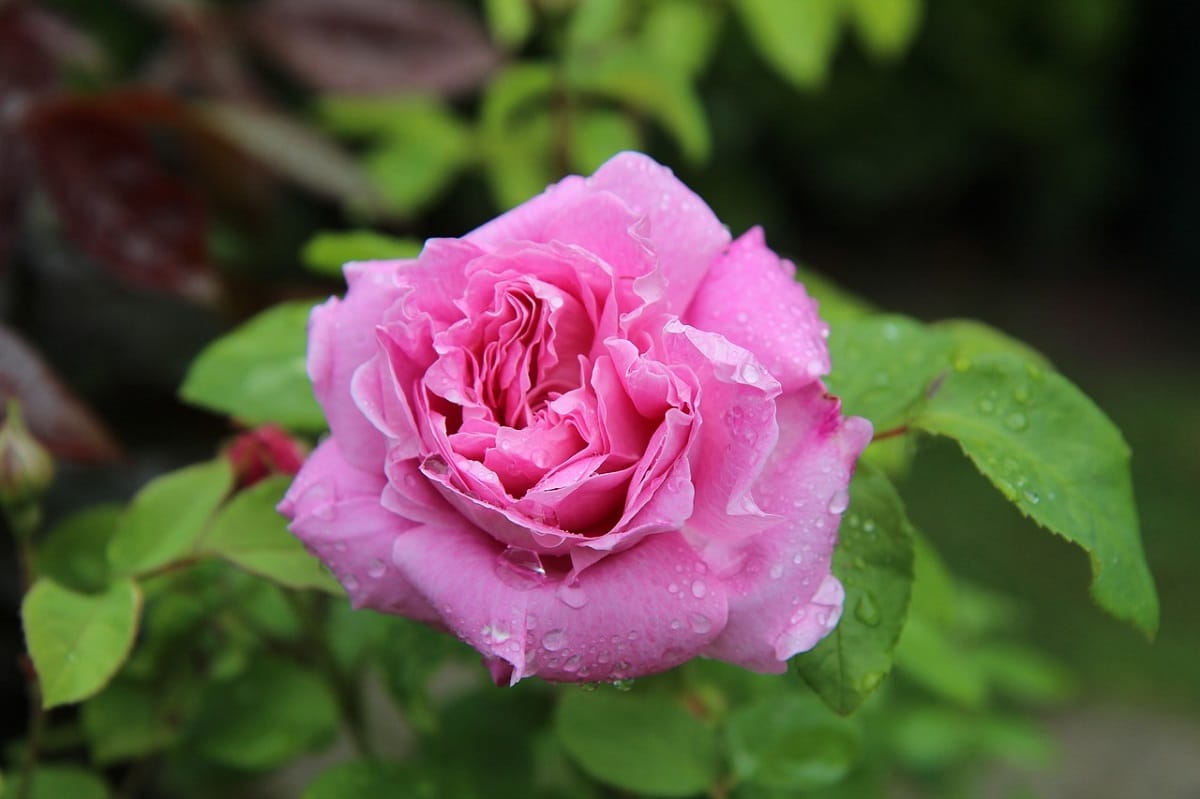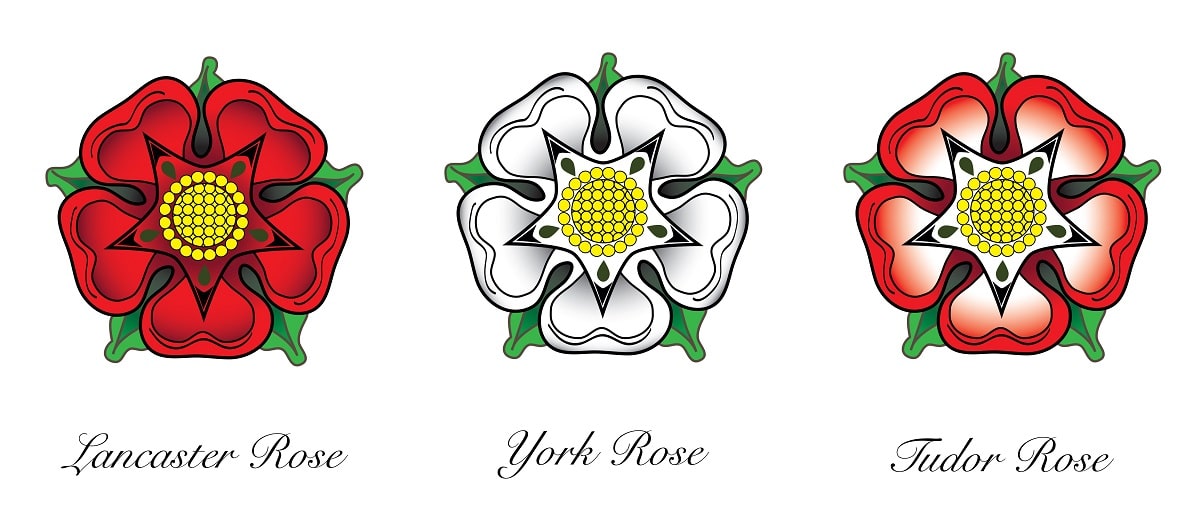
La Tudor Rose (sometimes called Union rose or simply English rose) is the national heraldic emblem of England since the late Middle Ages. This flower takes its name from the Tudor house, the dynasty that united the noble houses of Lancaster and York.
In traditional shields of England, this rose appears represented with five white petals (that represent the House of York) and another five red ones (for the one of Lancaster). However, in the world of floristry, the Tudor rose is pink, a hue that is the result of the mixture of the red rose and the white rose.
Historical origins
The Tudor rose has a powerful symbolic charge as it represents the end of the call War of the Roses, the armed conflict that confronted the two most powerful aristocratic families in England during the XNUMXth century.
The war ended with Henry of Lancaster's victory in the Battle of Bosworth Field (1485). The victor proclaimed himself king by the name of Henry VII, although a year later he took as his wife Elizabeth of York, thus uniting both families and materializing the reconciliation. To illustrate this new unity in a single symbol, the two-color rose (later pink rose) was adopted, which from that moment on will be known as Tudor rose or union rose.
Beyond the legend, the historical reality affirms that during the bloody English civil war only the symbol of the white rose existed, used by the house of York. Apparently, the red rose was adopted after the end of the conflict for the sole purpose of creating the new emblem. A propaganda medium of the time to consolidate the new national unity and seal old wounds.

The Tudor Rose, the result of the union between the emblems of the House of Lancaster (red rose) and the House of York (white rose).
Since then, throughout the history of England the Tudor rose has been represented in the most diverse ways. Sometimes as a double rose, others with one of the roses superimposed on the other and, more usually, as a single fused rose. The representation of the rose topped by a crown is also very common, as a symbol of the unified British monarchy.
Tudor rose: symbol of England
Today, the Tudor rose is considered the official symbol of England, though not of the United Kingdom. In reality, each of the four nations that make up the country uses its own emblem: Scotland has the thistle, Wales the leek e North Ireland the shamrock, which is also the symbol of the Republic of Ireland.
The Tudor rose is found on the official emblem of the Guardians of the Tower of London and the body of the Queen's bodyguards. It also appeared for many years on the reverse of the 20 pence coin. Of course, he also chairs the coat of arms of the United Kingdom and the Supreme Court from this country.
In addition to this, fans of the Rugby they know very well that the union rose is present on the shirts of the players of the England national team.

Players of the English rugby team, with the rose on the chest
Many English towns and cities proudly wear the English rose in your local symbols. One of the best known is Sutton Coldfield, near Birmingham, to which Henry VIII himself granted the status of Ciudad Real. The Tudor rose also appears on the coat of arms of the university town of Oxford.
Similarly, it should be noted that the rose is used in all documents and sites of the England tourist office (VisitEngland), albeit with a monochrome design.
The rose far from England
But also the famous union rose appears in other locations far from England. For example, the district and county of Queens in New York City, wears a Tudor rose on its flag and official seal. Also the banner of Annapolis in Maryland, features a Tudor rose alongside a Scottish thistle, both topped by a crown.
Without leaving the United States, there is another historical and geographic curiosity in the state of South Carolina. There we can find a town called Y, known as «the city of the white rose». Just 50 kilometers away, heading southeast and without leaving the state, there is another town that bears the name of Lancaster. And the nickname of this town is, of course, "the city of the red rose."
Finally, we can also find the Tudor rose in the coat of arms of Canada, a vestige of the British colonial era that has endured over time.